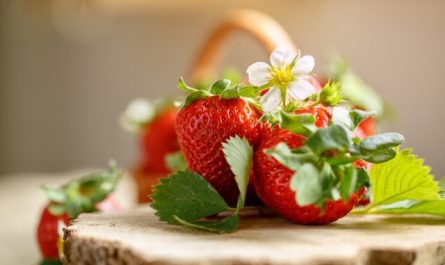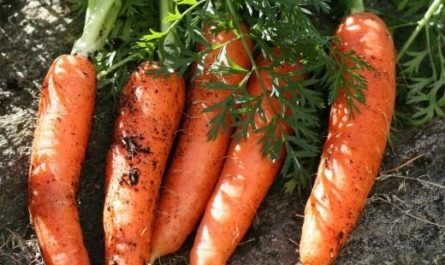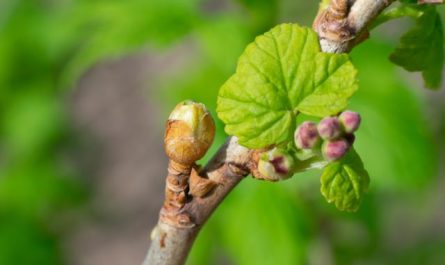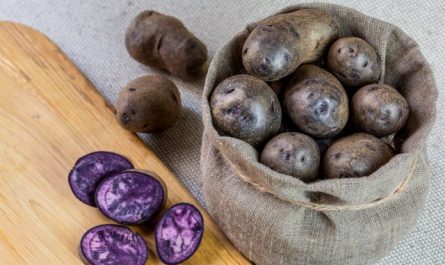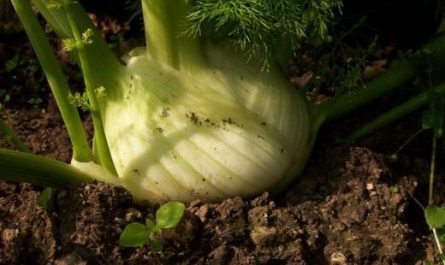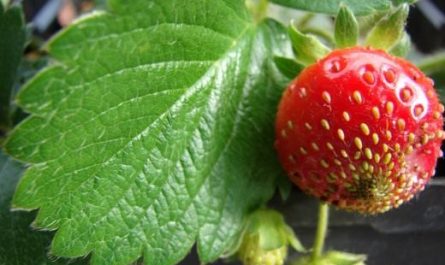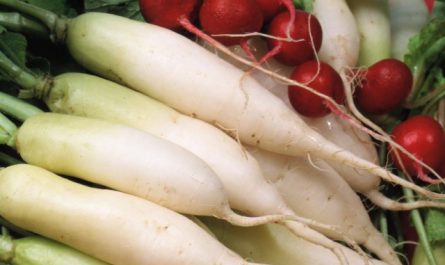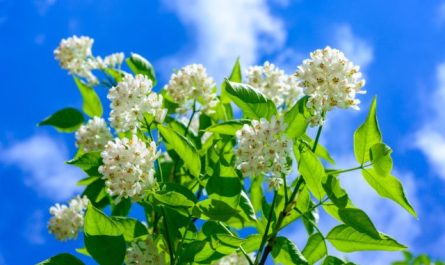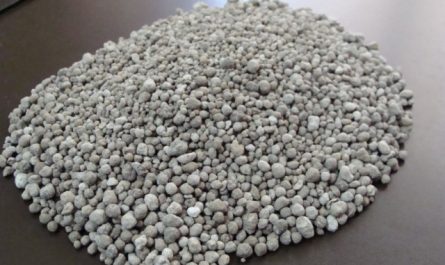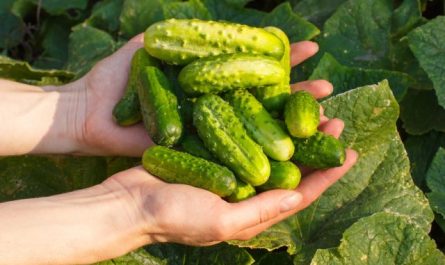Almost all varieties of honeysuckle that are found in our gardens today are ideal for a moderate climate and have proven themselves very well in the middle zone. But for southerners, honeysuckle has long been not the most suitable berry bush. This situation was observed until hybrid varieties of honeysuckle of Canadian selection appeared on the market. In this article, I will tell you why Canadian honeysuckle is good for gardeners in the southern regions and whether it is suitable for growing in the middle zone.

Features of the newest Canadian honeysuckle
Modern varieties of honeysuckle of Canadian selection are the result of complex hybridization. According to breeders, the crop has 38% of genes from Russian honeysuckles, 38% from Japanese and 24% from Kuril (small-netted honeysuckle). A distinctive feature of the group of new varieties is the ability to give good harvests and bear fruit not only in a moderate climate, but also in southern regions.
A similar task has been faced by breeders in Russia and abroad for many years, but the most outstanding results were achieved by Canadian scientists. The first series of varieties that met the specified requirements was bred at the University of Saskatchewan (in the south-central part of Canada) by Professor Bob Bors.
Due to their unique features, the new varieties were singled out into a separate group, which became their trademark, and were given the name “Haskap” (Haskap). This name is translated from the ancient dialect of the northern Japanese region as “berry of long life and good vision.”
The most popular varieties are those of the Canadian honeysuckle group. “Boreal” (“Northern”): “Boreal Beauty” (Boreal Beauty), or “Northern Beauty”, “Boreal Bist” (Boreal Beast), or “Northern Beast”, “Boreal Blizzard” (Boreal Blizzard), or “Northern Buran”.
By the way, when choosing honeysuckle varieties for your garden, you should take into account that honeysuckle of traditional varieties will not be able to become a full-fledged pollinator for the newest representatives of the Canadian group, since Canadians bloom somewhat later than other varieties. At the same time, honeysuckle is a self-sterile crop and needs cross-pollination. Therefore, it is best to purchase several seedlings of new Canadian varieties at once.

Why can Canadian honeysuckle be grown in the South?
Usually, southerners prefer not to deal with honeysuckle, since in hot regions it practically does not bloom, and, therefore, does not yield a harvest, or bears fruit in very small quantities. In fact, such a phenomenon is very easy to explain. Honeysuckle is a crop with a short period of natural dormancy, which also strongly depends on weather conditions.
Traditional honeysuckle varieties usually enter a dormant period very early. And with the arrival of early autumn and a fairly cold winter, the state of “sleep” is maintained by natural conditions. And if in the middle zone there are usually no problems with this, then in the southern regions with a long warm autumn, honeysuckle awakens and begins to bloom untimely. With the arrival of winter, flower buds freeze, as a result of which flowering in the spring is very weak.
The newest Canadian varieties are able to remain in a dormant period for a long time, which means that they do not bloom in warm weather in the fall and retain all their strength until spring. As a result, such varieties give high yields even in hot climates.
What makes it good for the middle zone?
Honeysuckle is widely known as one of the earliest garden berries. It is highly valued as the first source of sweet vitamins from the garden, because honeysuckle fruits ripen even earlier than strawberries. But the fruiting period, alas, is very short. And although in the middle of summer in our gardens there is usually plenty to enjoy, honeysuckle with its unique taste and valuable set of nutrients would also not be superfluous throughout the summer.
Now, thanks to Canadian-bred honeysuckle, it has become quite possible to extend the fruiting of this berry practically throughout the summer. To do this, you just need to combine plantings of traditional honeysuckle varieties, which usually ripen in late spring-early summer, with new Canadian varieties, which bear fruit in July and even until the end of August.
Another advantage of Canadian-bred honeysuckle is that many of its varieties have a rather unusual shape for honeysuckle. Over the years, we have become accustomed to seeing honeysuckle as exclusively elongated, often spindle-shaped. But some new hybrids have an unusual swollen oval shape, which will radically change our understanding of honeysuckle and add variety to the garden. The size of these berries does not disappoint either, their average weight is 3 grams, but with proper care it can reach 4,5 grams.

How are Canadian honeysuckle berries different from other varieties?
Modern varieties of Canadian honeysuckle (especially those with the prefix “Boreal”) have increased early fruiting and increase their yield faster than traditional varieties. Plants aged 3-4 years are capable of yielding up to 2,5 kg of berries per bush, while usually honeysuckle can reach such a yield by about 5-7 years.
A significant disadvantage of most honeysuckle varieties is their high shedding rate, which is also a common reason why gardeners dislike this garden crop. This phenomenon is especially unpleasant for “weekend gardeners” who can simply miss the harvest and find it on the ground. Canadian honeysuckles practically do not shed even when fully ripe.
One of the most popular new varieties, “Boreal Beauty”, holds on to the branches so firmly that it can easily dry up by the end of summer and turn into “honeysuckle raisins” on its own. By the way, it is an appetizing delicacy and can be stored in tightly closed containers during the winter. In addition, the berries do not ripen at once; fruiting is spread out over time.
Thanks to its raised and open habit, Canadian honeysuckle is very quick and easy to pick. Moreover, such a feature will be important not only for manual picking, but also for mechanized harvesting. Another advantage of new hybrids for commercial use is that the berries are denser than those of traditional varieties, making them easier to harvest and transport. Summer residents who transport their harvest to the city will also highly appreciate this feature of the berries.
And last but not least, many people do not like honeysuckle and are convinced that they will never plant it in their garden because of its specific taste with a pronounced bitterness. Such an impression may well be formed if a person has once tried not the most successful varieties of this berry. Hybrids of Canadian selection are completely devoid of this piquant bitterness. Their berries can easily be described as “delicious and sweet” without any reservations. Modern varieties really have a delightful taste, since they have a balanced combination of sugar and acids, the most delicate consistency and a pleasant aroma.
Description of varieties
Honeysuckle ‘Boreal Beast’
Honeysuckle ‘Boreal Beast’, or ‘Northern Beast’ (Boreal Beast) has a later flowering time, compared to traditional varieties, and, as a result, later fruiting. Moreover, the fruiting period of the variety is extended in time. The berries begin to ripen in July and delight until mid-August or even until the end of summer.
The berries are large – 2-2,5 centimeters long and more than 1-1,5 centimeters in diameter. They can weigh up to 3,5 grams. Their shape is quite unusual for honeysuckle – broadly oval, slightly flattened on the sides, black-violet in color. They are elastic in consistency, fleshy and have a dense skin. The taste of the berries can be described as exquisite, they have a pronounced sweetness and a slight delicate sourness with a fruity aftertaste. They also have a bright pleasant aroma, which is not typical for honeysuckle.
Another important advantage is the absence of shedding. If it is not possible to harvest on time, the berries will hang on the bushes even after the leaves have fallen. The height of an adult bush is approximately 1,5 m, the habit is round, it grows quickly, the shoots are thick and strong. Winter hardiness is high.

Honeysuckle “Boreal Beauty”
Honeysuckle ‘Boreal Beauty’ or ‘Northern Beauty’ (Boreal Beauty) has several distinctive features: it ripens a month later than traditional varieties, produces large berries that are well suited for mechanical harvesting, and has strong branches that hold heavy berries well.
This cultivar is considered a favorite among the staff of the university where it was created. In their opinion, “Boreal Beauty” is one of the first large-fruited varieties that completely changed the honeysuckle growing industry. The crop ripens from the end of July to the end of August. The berries are up to 2,5 centimeters long and up to 1 centimeter in diameter, their weight is 3-3,5 grams. The fruits are of an unusual shape: swollen, oval, gray-violet in color, they are elastic and fleshy, the skin is very thick, which greatly facilitates harvesting and transportation. The separation is dry, the fruits are removed with effort.
The taste is balanced, deep, multifaceted, sweet with a slight sourness, bitterness is completely absent. The berries do not fall off, after full ripening they remain on the branches. The bush is spherical, 1,2-1,4 meters high, dense and fast-growing. High winter hardiness.

Honeysuckle ‘Boreal Blizzard’
Honeysuckle ‘Boreal Blizzard’ or ‘Northern Buran’ (Boreal Blizzard) is another valuable variety from the Boreal series, which has many advantages. First of all, it has the largest fruits of the entire group of varieties. The berries begin to ripen in mid-July, and fruiting continues until mid-late August.
The berries are very large, the average length is 2,5-3 cm and up to 1 cm in diameter. Often this cultivar has record-breaking berries, weighing 4 grams. The shape of the berries is classic oval-elongated, some berries are teardrop-shaped, slightly flattened, their consistency is fleshy and juicy, the skin color is bluish-ink. The taste of the fruits is distinguished by many shades and has a harmonious combination of sweetness and sourness.
The berries are torn off with effort, have a dry tear, do not crumble after ripening. The large size of the fruits makes the variety ideal for growing for sale, since larger berries are usually in greater demand and are sold at a higher price. The bush is strong and very powerful, its height is 2,4 meters, width is 1,5 meters. Winter hardiness is high.

Honeysuckle ‘Borealis’
Honeysuckle ‘Borealis’ or ‘Northern Lights’ (Borealis) the earliest of the group of the newest varieties with a late fruiting period. The harvest in the middle zone ripens in early July and the total fruiting period lasts about a month. The berries are very large 3-3,5 grams, their average length is 2,5 centimeters with a diameter of about 1 cm. The shape of the fruit resembles oval barrels, the color is purple-gray. The fruits are elastic, fleshy, have a very thick skin, which greatly facilitates harvesting and transportation, the berries are torn off with effort, the tearing is dry.
The taste of this variety is rich, intensely sweet with a slight piquant sourness, without any bitterness. There is no shedding of ripe berries. The bush is powerful, about 1,5 meters high, rounded in shape, grows very quickly, shoots are strong and thick. High winter hardiness.

Honeysuckle “Tundra”
Honeysuckle “Tundra” (Tundra) was bred in Canada in 2007 with the participation of honeysuckle varieties from Japan and Russia. The main advantages of the cultivar: early fruiting, high quality berries, intensive growth and high yield. The shape of the berries is elongated-oval barrel-shaped, the color is purple with a pronounced bluish bloom. The fruits are very large, their length is 2,5 centimeters, and the weight is up to 3 grams.
The pulp is quite dense and juicy, the peel is dense. The taste of the berries is one of the sweetest of all the honeysuckle of Canadian selection, the fruits are very sweet and completely devoid of the sourness characteristic of honeysuckle, while the taste is very rich, intense and has many shades and a pleasant aftertaste. There is no shedding, the fruits can remain on the bushes for a long time, drying out on their own and turning into raisins. The bush reaches a height of 1,2-1,5 m, grows quickly. The crown is dense, the habit is spherical. Winter hardiness is high.

Pollinator Selection Guidelines for Canadian Honeysuckle
As mentioned above, honeysuckle requires cross-pollination for a good yield. However, given the later flowering of the newest Canadian varieties, traditional honeysuckle cultivars cannot serve as pollinators for them. Therefore, it is advisable to plant several late Canadian varieties at once, for example, all representatives of the Boreal series.
By the way, even the varietal names of the new varieties remind us of the need for group planting of honeysuckle. For example, “Northern Beauty” and “Northern Monster” are a priori an ideal pair. But, in addition to “Boreal”, other late honeysuckle varieties such as “Aurora”, “Blue Banana”, “Honey Bee”, “Heart of the Giant” and some others are also suitable as pollinators for the above-mentioned Canadian varieties.

